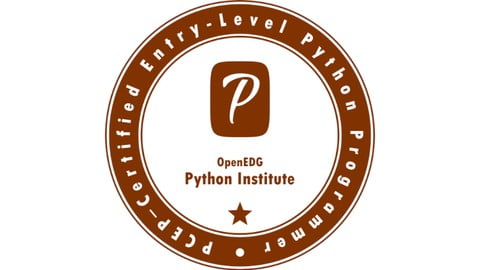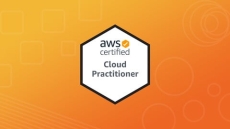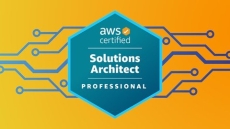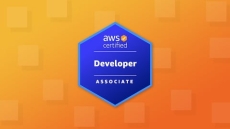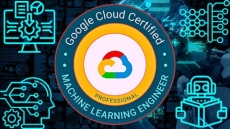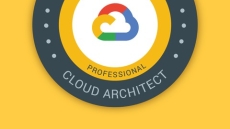Exam Syllabus
Computer Programming and Python Fundamentals
- Understand fundamental terms and definitions
interpreting and the interpreter, compilation and the compiler, lexis, syntax and semantics - Understand Python’s logic and structure
keywords, instructions, indenting, comments - Introduce literals and variables into code and use different numeral systems
Boolean, integers, floating-point numbers, scientific notation, strings, binary, octal, decimal, and hexadecimal numeral system, variables, naming conventions, implementing PEP-8 recommendations - Choose operators and data types adequate to the problem
numeric operators: ** * / % // + –, string operators: * +, assignments and shortcut operators, operators: unary and binary, priorities and binding, bitwise operators: ~ & ^ | << >>, Boolean operators: not and or, Boolean expressions, relational operators ( == != > >= < <= ), the accuracy of floating-point numbers, type casting - Perform Input/Output console operations
print(), input() functions, sep= and end= keyword parameters, int() and float() functions
Conditional Blocks and Loops
- Make decisions and branch the flow with the if instruction
conditional statements: if, if-else, if-elif, if-elif-else, multiple conditional statements, nesting conditional statements - Perform different types of iterations
the pass instruction, building loops with while, for, range(), and in; iterating through sequences, expanding loops with while-else and for-else, nesting loops and conditional statements, controlling loop execution with break and continue
Data Collections – Tuples, Dictionaries, Lists, and Strings
- Collect and process data using lists
constructing vectors, indexing and slicing, the len() function, basic list methods (append(), insert(), index()) and functions (len(), sorted(), etc.), the del instruction; iterating through lists with the for loop, initializing loops; in and not in operators, list comprehensions; copying and cloning, lists in lists: matrices and cubes - Collect and process data using tuples
tuples: indexing, slicing, building, immutability; tuples vs. lists: similarities and differences, lists inside tuples and tuples inside lists - Collect and process data using dictionaries
dictionaries: building, indexing, adding and removing keys; iterating through dictionaries and their keys and values, checking the existence of keys; keys(), items() and values() methods - Operate with strings
constructing strings, indexing, slicing, immutability; escaping using the \ character; quotes and apostrophes inside strings, multi-line strings, basic string functions and methods
Functions and Exceptions
- Decompose the code using functions
defining and invoking user-defined functions and generators; the return keyword, returning results, the None keyword, recursion - Organize interaction between the function and its environment
parameters vs. arguments; positional, keyword and mixed argument passing; default parameter values, name scopes, name hiding (shadowing), the global keyword - Python Built-In Exceptions Hierarchy
BaseException, Exception, SystemExit, KeyboardInterrupt, abstractive exceptions, ArithmeticError, LookupError along with IndexError and KeyError; TypeError and ValueError exceptions, the AssertError exception along with the assert keyword - Basics of Python Exception Handling
try-except, try-except Exception, ordering the except branches, propagating exceptions through function boundaries; delegating responsibility for handling exceptions
Why learn Python?
Python is easy to learn. The syntax is simple and the code is very readable. With Python, you can write programs in fewer lines of code than with most other programming languages. The popularity of Python is growing rapidly. It is now one of the most popular programming languages. Python has a wide variety of applications. It is used for automation, web application development, artificial intelligence, data science and so on:
Automation
Python can make life easier by automating many tasks, such as scraping a website to collect data, automating test cases in software development, or automating everyday office tasks. Python can easily access and read all kinds of files, which opens up the possibility of saving a lot of time by automating repetitive tasks.
Web Development
Python is a good choice for rapid web application development. With many frameworks like Django, Pyramid, and Flask, you can develop web applications with great speed using Python. Python is used on the server side of web development. You can use Python to interact with database and create RESTful API services.
Artificial Intelligence
The near future will be the era of artificial intelligence. In the past, computers and machines were used to perform mathematical calculations at very high speeds, but now many large organizations and researchers are working to develop intelligent systems that can perform tasks like a human. To some extent, machines are able to understand human emotions and their natural language. They can mimic certain human actions that were not possible before. Again, Python is very popular for developing AI systems.
Data Science
Earlier, Python was mainly used to build applications and write scripts to automate tasks, but now a brand new trend of data science has given Python an even bigger boost. Data scientists are heavily dependent on Python because it is so simple, has a large community, and can perform huge calculations with ease.
Python is being used in a wide variety of fields, and there are no signs that this trend is coming to a halt. It’s safe to say that Python is here to stay for the long haul in this ever-changing and evolving IT industry.
Who this course is for:
- Everybody who is preparing for the Python certification Python Institute PCEP-30-02.
- Everybody who is preparing for a Python job interview.
- Everybody who wants to learn more about Python by questions and their explanations.
- Everybody who wants to test their knowledge of Python.
- Everybody who wants to learn Python to move into artificial intelligence, machine learning, data science, web development or automation.
- Every Python programmer who wants to improve their knowledge of Python.
- Every programmer who wants to switch to Python.
How to Enroll Python Certification Exam PCEP-30-02 – Preparation (2024) course?
How many members can access this course with a coupon?
Python Certification Exam PCEP-30-02 – Preparation (2024) Course coupon is limited to the first 1,000 enrollments. Click 'Enroll Now' to secure your spot and dive into this course on Udemy before it reaches its enrollment limits!
